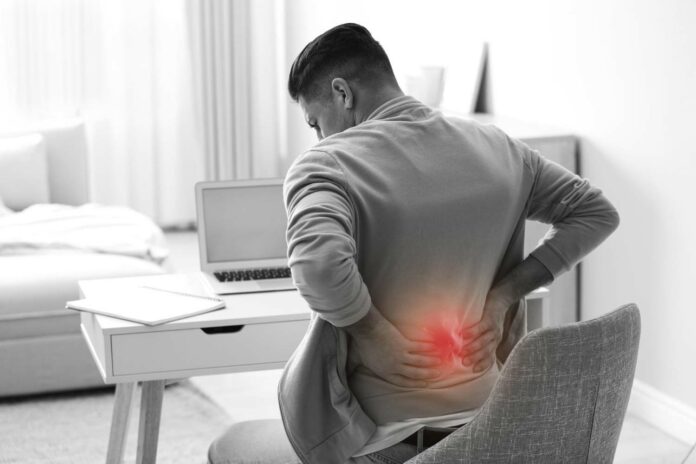A recent study at Cedars-Sinai may have figured out why some people experience a specific type of back pain. Around 40% of adults deal with lower back pain because of worn-out disks in the spine, but until now, doctors didn’t know why the disks hurt.
In a new report in Science Translational Medicine, researchers at Cedars-Sinai suggest they’ve found a clue and might be on the path to a targeted treatment. Dmitriy Sheyn, Ph.D., a scientist at Cedars-Sinai, explains, ‘We’ve pinpointed specific cells that could be the key to understanding why disks cause pain. Understanding how these cells function could lead to finding new ways to treat the problem.
Sheyn said, “The bones making up the spine are interspersed with jelly-filled spacers, known as intervertebral disks, that act as shock absorbers. Due to age, overuse, or injury, the jelly starts to dry out and degenerate, but this doesn’t mean that the disk necessarily becomes painful.”
“Some people feel back pain when their spinal disks wear out because the inner jelly-like layers of the disks usually don’t have nerve endings,” explained Sheyn, an assistant professor at Cedars-Sinai. “But when the disks degenerate, nerves from nearby tissues can enter the disk, causing pain.”
Researchers discovered different cell types in this jelly-like layer. When they compared cells from people with pain-free, worn-out disks to those with back pain, they found that those with back pain had more of a specific cell type, suggesting its involvement in causing the pain.
“This is a big step in understanding why back pain happens with worn-out disks,” said Professor Hyun Bae, MD at Cedars-Sinai. “It brings us closer to finding a non-surgical treatment.”
“Some people feel back pain when their spinal disks wear out because the inner jelly-like layers of the disks usually don’t have nerve endings,” explained Sheyn, an assistant professor at Cedars-Sinai. “But when the disks degenerate, nerves from nearby tissues can enter the disk, causing pain.”
Researchers discovered different cell types in this jelly-like layer. When they compared cells from people with pain-free, worn-out disks to those with back pain, they found that those with back pain had more of a specific cell type, suggesting its involvement in causing the pain.
“This is a big step in understanding why back pain happens with worn-out disks,” said Professor Hyun Bae, MD at Cedars-Sinai. “It brings us closer to finding a non-surgical treatment.
“We’re unsure if the cells causing pain attracted nerve invasion or if healthy cells prevented it. However, there’s a clear difference between the two,” explained Sheyn.
Based on this discovery, future treatments might involve turning pain-associated disk cells into healthy cells or adding healthy cells to painful disks to outnumber the pain-associated ones. Clive Svendsen, Ph.D., from Cedars-Sinai, suggests, “Targeting the ‘bad’ cells or adding more ‘good’ cells could help treat low back pain.
This study validates some knowledge in pain biology. It could be a step toward a targeted cell therapy for the root causes of low back pain. The study also included contributions from research scientists Wensen Jiang, PhD, and Juliane Glaeser, PhD, at Cedars-Sinai.
This research marks a significant breakthrough in understanding the mechanisms behind low back pain associated with degenerating disks. By identifying specific cells and their role in pain onset, the study paves the way for potential non-surgical biologic treatments, bringing hope to those who suffer from this common and often debilitating condition.
Journal reference:
- Wensen Jiang, Juliane D. Glaeser et al., Intervertebral disc human nucleus pulposus cells associated with back pain trigger neurite outgrowth in vitro and pain behaviors in rats. Science Translational Medicine. DOI: 10.1126/scitranslmed.adg7020.
